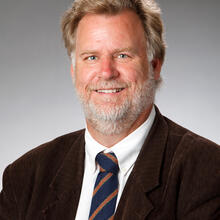The Gospel passage for the Wednesday of the Fourth week of Lent, John 5:17-30, seems on first reading to be, like so much of John, ethereal and other-worldly. It might be that as well, but it is one of the most down-to-earth passages in the Gospels. Some years ago the British New Testament scholar C.H. Dodd argued that the imagery arose from the ancient understanding of father-son relationships. Cornelia Horn and I utilized Dodd’s insight in our recent book, “Let the Little Children Come to Me”: Childhood and Children in Early Christianity. I cite from pages 53-54 of our book, including the footnotes which are found there:
“The idea of the son’s dependence upon the father for what he knows, his obedience to the father’s will, and the response given to the son as being the equivalent of the response given to the father, all come together again in John 5:19-46 (cf. also John 6:35-51). The will of Jesus is equivalent to that of his father because the father’s authority is in the son. What Jesus knows, he has learned from his father. Charles H. Dodd has an interesting take on this passage:
There is a parable about a son learning his trade by watching his father at work: “A son can do nothing on his own account, but only what he sees his father doing. What the father does, the son does in the same manner. For the father loves his son and shows him everything that he does himself” (all the secrets of the craft). It is perhaps not too bold to find here a reminiscence of the family workshop at Nazareth. There Jesus learned to be a “carpenter.”[1]
Dodd saw the image as one taken from daily life, one in which the son learned his craft or trade from the father: “basically, this is a picture from daily life, but John, after his manner, has made use of it to enforce a theological point.”[2] Yet we might argue that the force of the theological point rises from its indebtedness to daily life, that Jesus’ sonship is explicable precisely because it makes sense of spiritual sonship by means of the images of daily life.
Indeed, in all of the passages from the Gospels certain themes emerge: God’s son must be obedient to the will of the father, he cannot be a wayward son and be a true child of God at the same time; he must make known the father and so model himself on the father; his task, his work, is that of the father, and so he is the student of the father; he acts only on the authority of the father. In all this, images of daily life emerge; Jesus is God’s son because he does the work of the father, just like the child of any father in the ancient world was expected to do.”
In all of these ways Jesus models for us, from the nitty-gritty images of daily life, the requirements of the spiritual life. “I cannot do anything on my own; I judge as I hear, and my judgment is just, because I do not seek my own will but the will of the one who sent me” (John 5:30). As children of God, we, too, have the model to follow: the Son who does the will of the Father.
John W. Martens
[1] Charles H. Dodd, The Founder of Christianity (New York: MacMillan Publishing Company, 1970), 120. The Scripture quotation is from John 5:19-20.
[2] Dodd, The Founder of Christianity, 179, n. 4.








Your post is so straight forward and clear that I was just going to tuck it away. But I felt troubled at the end and have come back to put my finger on the sore. It's that phrase, so much like the humble response before Communion that we are not worthy.
I understand the deeper meanings of these words and their significance for our humility and our willingness to follow God's will.
But our church is suffering under the weight of a flawed hierarchy and these words hold more than reminders of submission and obedience, but of an obsequiousness that has left our high leaders unaccountable and dangerously detached from real civil life.
For now, I am going to alllow myself to hold both the Jesus incarnate and the simply human man in my heart, looking to his willingness to confront and challenge authority as my own model for dealing with Holy Mother Church.